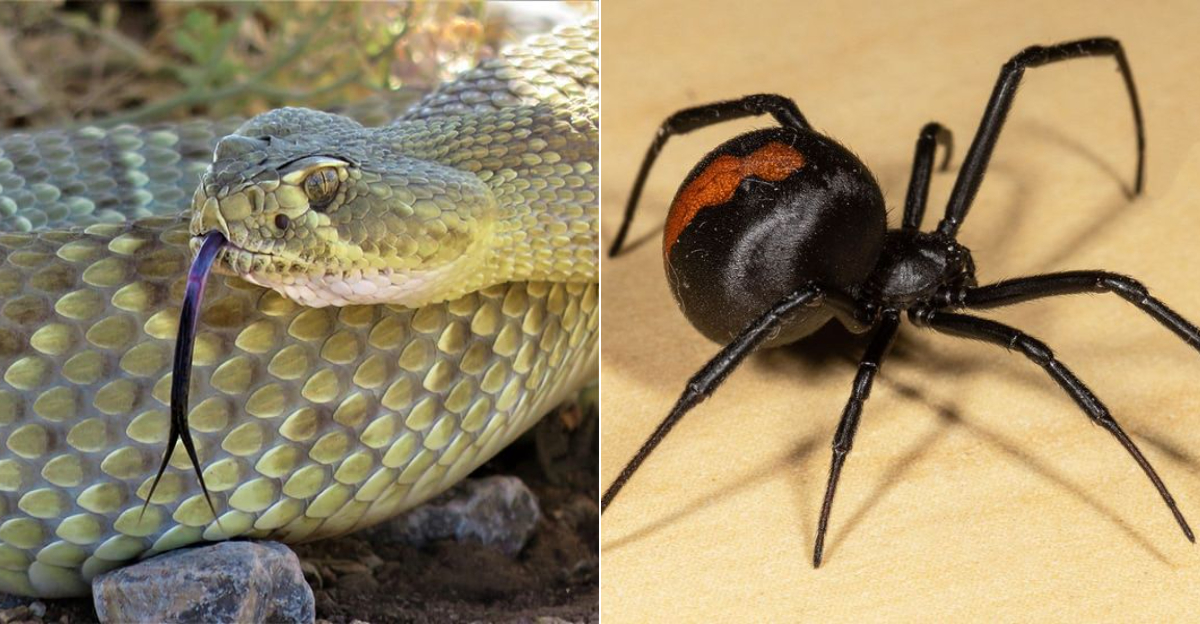California’s wild. Beautiful. Even dangerous.
Hidden in its landscapes are creatures that can threaten your safety. From scorching deserts to cold Pacific waters, these animals have defenses you won’t see coming.
Fatal encounters are rare—but they happen. Know who to watch out for. Stay alert. Respect the wild, or pay the price.
1. Western Diamondback Rattlesnake
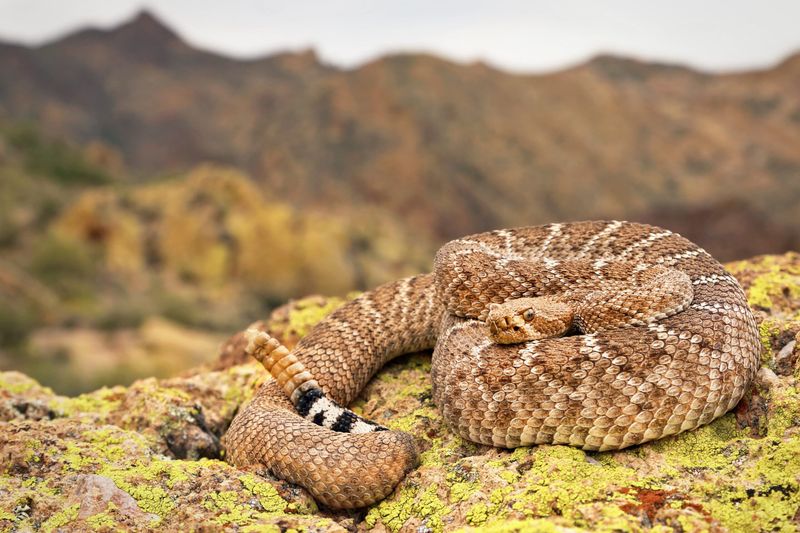
This venomous pit viper doesn’t mess around.
I once spotted one while hiking near Joshua Tree, and my blood ran cold when I heard that unmistakable buzz. They’re responsible for more snakebite fatalities than any other species in California. Their hemotoxic venom destroys tissue and causes internal bleeding.
These snakes can strike at distances up to two-thirds of their body length, making even a 4-foot specimen dangerous from nearly 3 feet away. Most bites occur when people accidentally step on them or try to handle them.
2. Sidewinder Rattlesnake

Despite rarely exceeding 2 feet in length, sidewinders shouldn’t be underestimated. The sidewinder’s venom isn’t as potent as other rattlesnakes, but it can still cause severe pain, swelling, and tissue damage.
These snakes are masters of ambush, partially burying themselves in sand with only their eyes and rattle exposed.
They’re primarily nocturnal, hunting at night when desert temperatures drop. This makes evening hikes particularly risky in their territory.
3. Mojave Green Rattlesnake
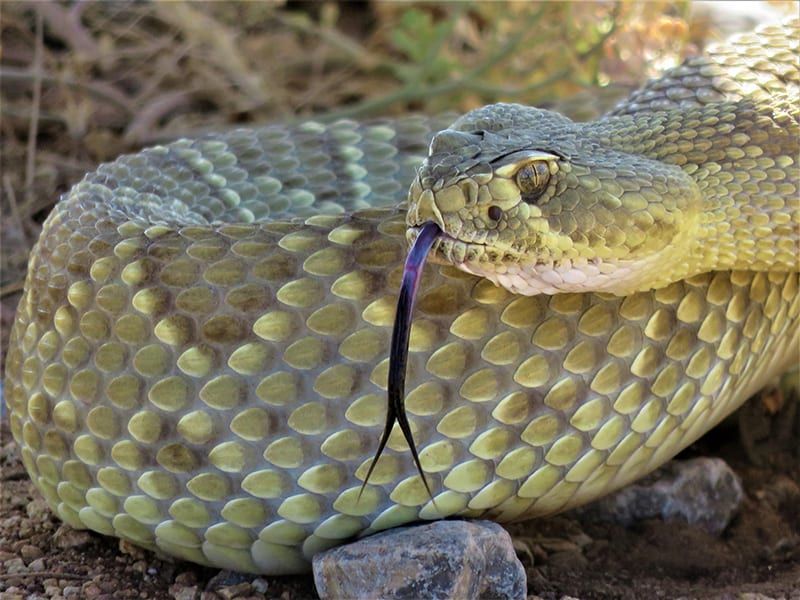
Pound for pound, the Mojave Green packs the most potent venom of any rattlesnake in America.
Unlike its cousins, this snake’s venom contains neurotoxins that can affect your nervous system, potentially causing respiratory failure.
What makes this snake particularly treacherous is its tendency to strike multiple times without warning. Many victims report the snake didn’t rattle before attacking.
4. Black Bear
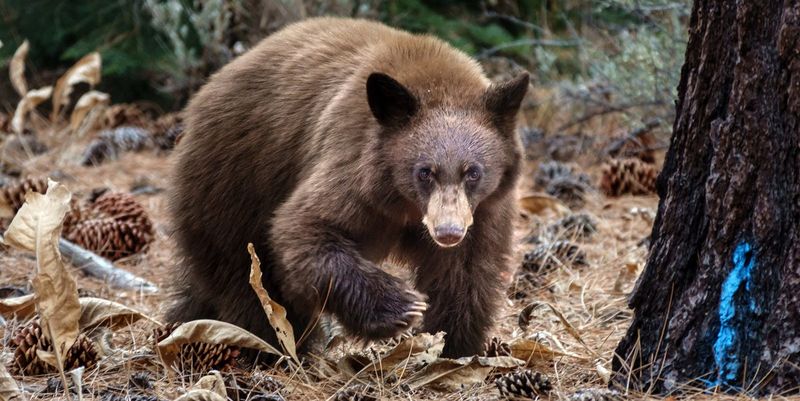
Don’t let their cuddly appearance fool you – black bears are powerful wild animals with incredible strength. They can be brown, cinnamon, or even blonde in color. They typically avoid humans, but problems arise when they associate people with food.
A fed bear is an extinct bear, as rangers say, because once they lose their natural fear of humans, they become dangerous. These omnivores can run up to 35 mph and climb trees effortlessly.
Their powerful jaws can crush bones, though they rarely attack people unprovoked.
5. Mountain Lion (Cougar)

These tawny cats are mostly solitary and avoid human contact when possible.
However, attacks do occur, particularly on lone hikers, joggers, or children. They’re ambush predators, preferring to pounce from behind, which makes them particularly unnerving.
My neighbor’s encounter with one on a trail near Santa Cruz still gives me chills. She rounded a bend and found herself face-to-face with a cougar. Thankfully, making herself look large and backing away slowly worked.
6. Coyote

While attacks on adults are rare, coyotes have been known to target small children and pets. They’re opportunistic hunters who’ve lost their fear of humans in many areas.
I’ve had several trot alongside me while walking my dog in Griffith Park, seemingly calculating their chances. Coyotes can carry rabies and other diseases transmissible to humans and pets.
They’re most active at dawn and dusk, when their yipping howls create an eerie soundtrack.
Never feed them – it only increases the danger they pose to communities.
7. Deer
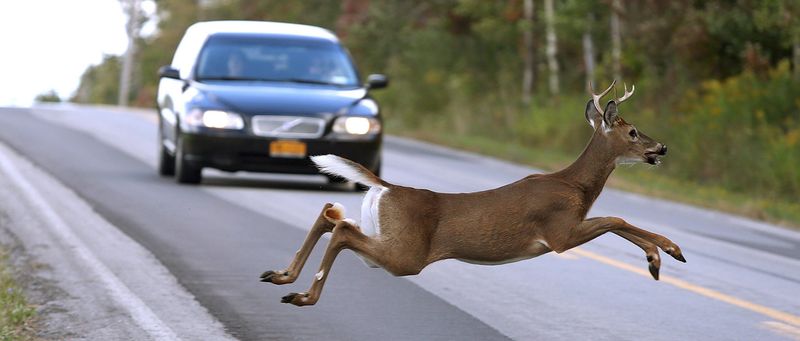
Surprised to see Bambi on this list? Did you know that deer cause more human casualties in California than any other wild animal – not through attacks, but via vehicle collisions.
Their habit of freezing in headlights makes them particularly dangerous on winding mountain roads. Male deer become especially aggressive during rutting season (fall through early winter).
Those impressive antlers aren’t just for show – they’re weapons capable of goring predators or perceived threats.
8. Great White Shark
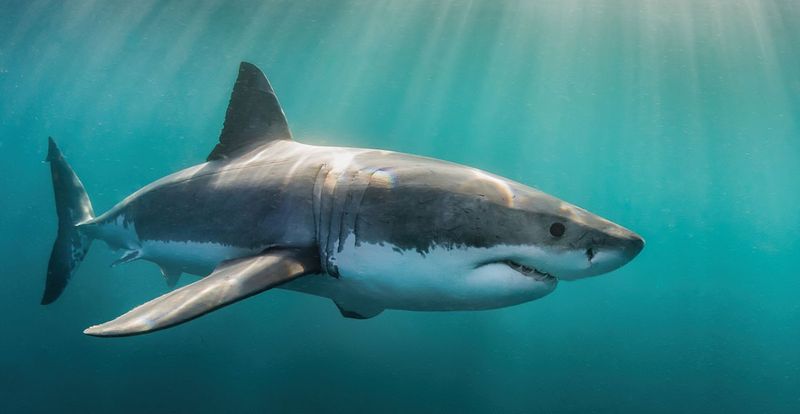
California’s most feared predator!
These massive sharks can exceed 20 feet in length and weigh over 4,000 pounds. Their powerful jaws contain rows of serrated teeth designed for tearing flesh. Most attacks on humans are “investigatory” – the shark mistakes a surfer or swimmer for its natural prey.
Despite their fearsome reputation, fatal attacks are extremely rare. You’re more likely to be attacked by a vending machine than a shark!
Still, I can’t help scanning the water nervously when swimming at Ocean Beach, knowing these apex predators patrol just offshore.
9. Leopard Shark
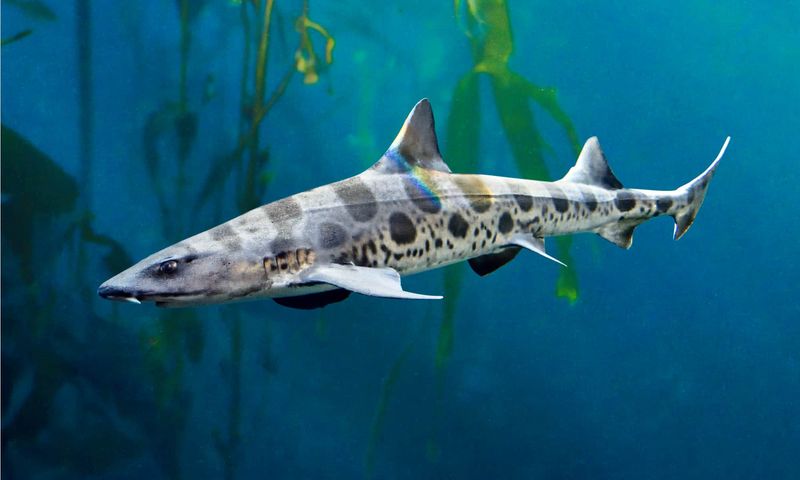
Don’t let the beautiful spotted pattern trick you. While leopard sharks rarely attack humans, they’re still wild predators.
Their diet consists mainly of crabs, small fish, and clams, which they hunt along the sandy bottom.
Unlike their great white cousins, leopard sharks have small, flat teeth designed for crushing rather than tearing. This makes them less dangerous to humans, but they can still deliver a painful bite if provoked or threatened.
10. California Moray Eel
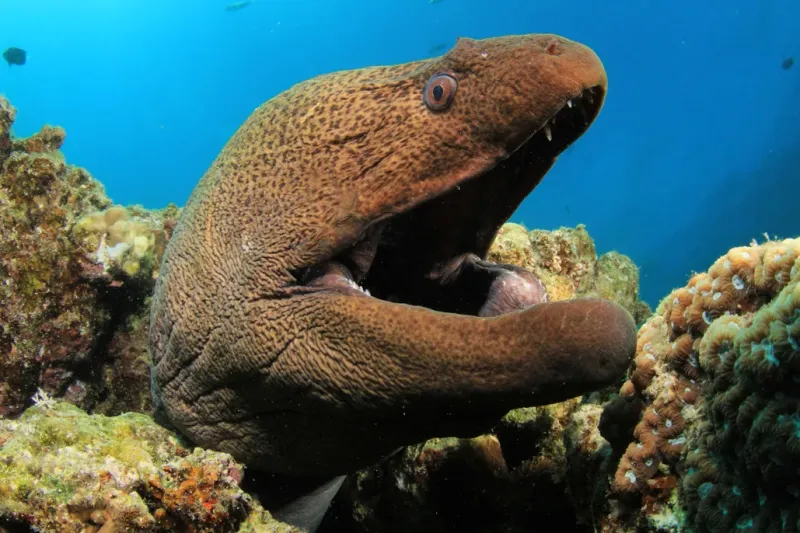
While not aggressive toward humans unless provoked, their bite can cause serious wounds that often become infected. Their skin contains a toxic mucus that can cause painful reactions if touched.
During a tide pool exploration near Monterey, a guide warned us about reaching into dark crevices where these creatures hide. Their camouflage is excellent, making them nearly invisible until they lunge.
Most bites occur when people accidentally step on them or put hands where they shouldn’t.
11. Black Widow Spider
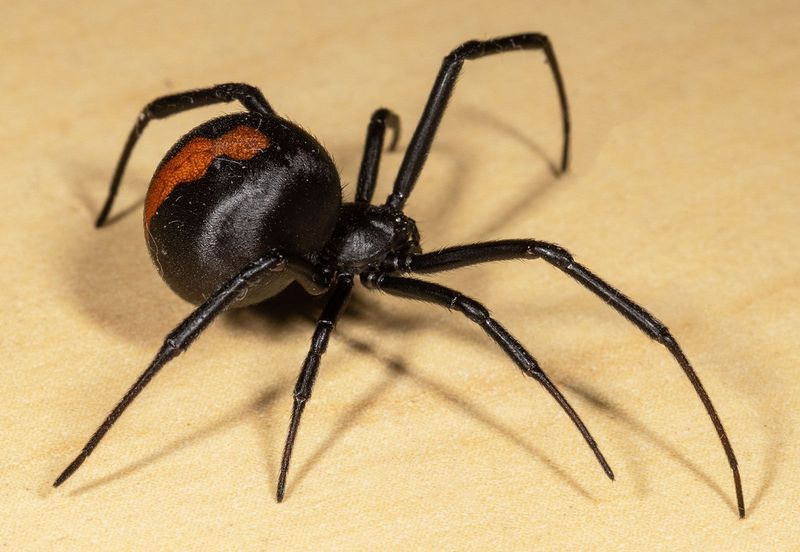
Black widows are California’s most dangerous arachnids.
These spiders prefer dark, undisturbed areas like woodpiles, garden sheds, and under outdoor furniture. Only the females are dangerous to humans, with venom 15 times more potent than a rattlesnake’s.
Fortunately, they inject very small amounts. Bites cause intense pain, muscle cramps, and in rare cases, respiratory difficulties.
Black widows aren’t aggressive and typically bite only when threatened or disturbed. Most bites occur when people unknowingly press against them while reaching into spaces where they’re hiding.
12. Brown Widow Spider

Distinguished by an orange hourglass (instead of red) and mottled brown coloring, these spiders are increasingly common around homes and gardens.
Their venom contains the same neurotoxin as black widows but is delivered in smaller amounts, making bites less dangerous but still medically significant. Symptoms include painful muscle cramps, sweating, and nausea.
These spiders love to build webs in outdoor furniture, playground equipment, and mailboxes.
13. Bark Scorpion
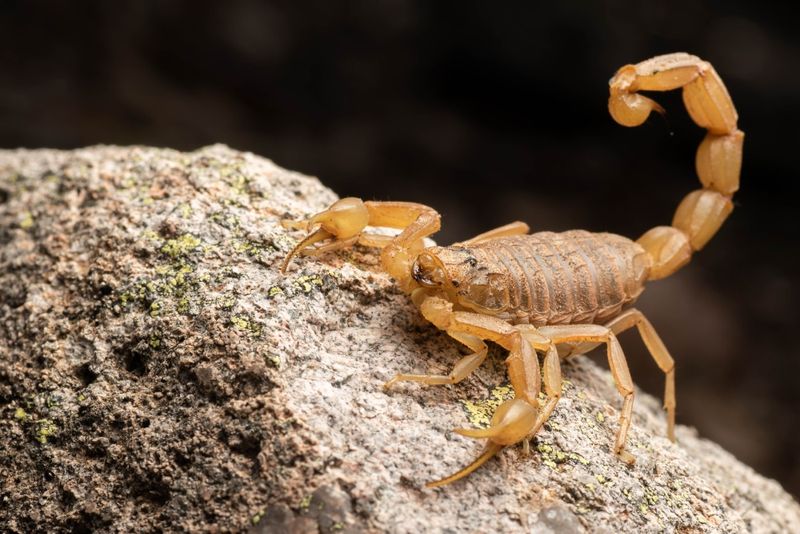
Small but mighty, the bark scorpion packs a painful punch that feels like an electric shock followed by intense burning.
Unlike larger scorpion species, bark scorpions are excellent climbers and can easily scale walls and ceilings. This means they can turn up in unexpected places – including beds and shoes.
Their slender bodies allow them to squeeze through tiny cracks in foundations and window frames. While rarely fatal to healthy adults, their sting can cause severe reactions in children and elderly people.
14. Africanized Honey Bee
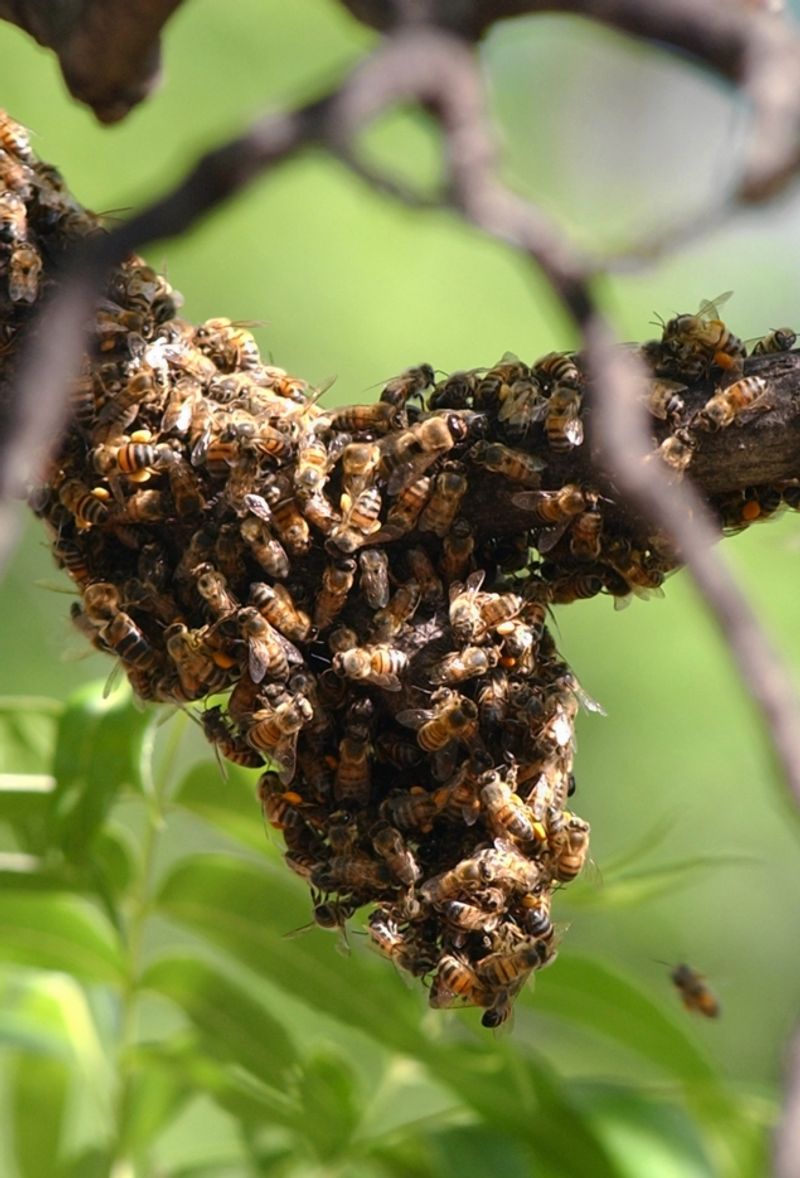
Their defensive behavior makes them particularly dangerous.
When threatened, Africanized bees attack in much larger numbers, pursue threats farther, and remain agitated longer than European honey bees.
They’ve been known to chase people more than a quarter-mile! Their hives can contain up to 80,000 individuals ready to defend their colony. A friend’s landscaping business in Riverside County now carries bee suits after workers disturbed a hidden hive.
Multiple stings can cause serious reactions even in non-allergic people. If attacked, running in a straight line and seeking enclosed shelter is your best defense.
15. Tarantula Hawk Wasp
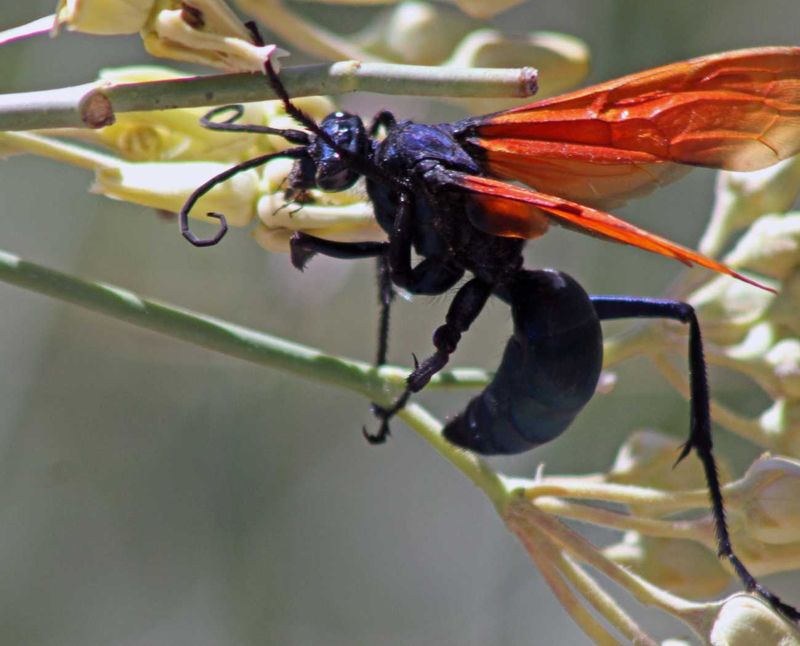
Found throughout California’s deserts and chaparral regions, these wasps aren’t aggressive toward humans unless handled or stepped on barefoot.
The pain from their sting has been described as “immediate, excruciating, and unrelenting” – though it typically subsides within a few minutes.
During a hike near Palm Springs, I froze as one of these giants hovered nearby. Despite their intimidating size and reputation, they’re usually too busy hunting spiders to bother with humans.
Still, I give them plenty of space when encountered.
16. Common Snapping Turtle
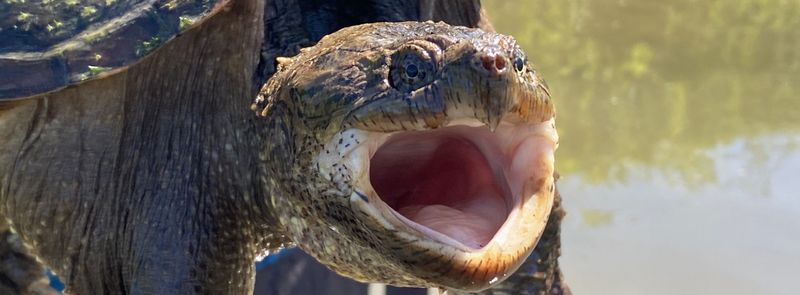
Snapping turtles possess lightning-fast strikes and powerful jaws that can easily remove fingers.
These prehistoric-looking reptiles inhabit California’s freshwater lakes, ponds, and slow-moving streams. Unlike other turtles that retreat into their shells when threatened, snappers stand their ground with open-mouthed aggression.
Their beaked jaws can exert up to 1,000 pounds of pressure per square inch – enough to sever bone.
The common snapper can weigh up to 35 pounds, while their larger alligator snapper cousins can exceed 200 pounds.
17. Gila Monster
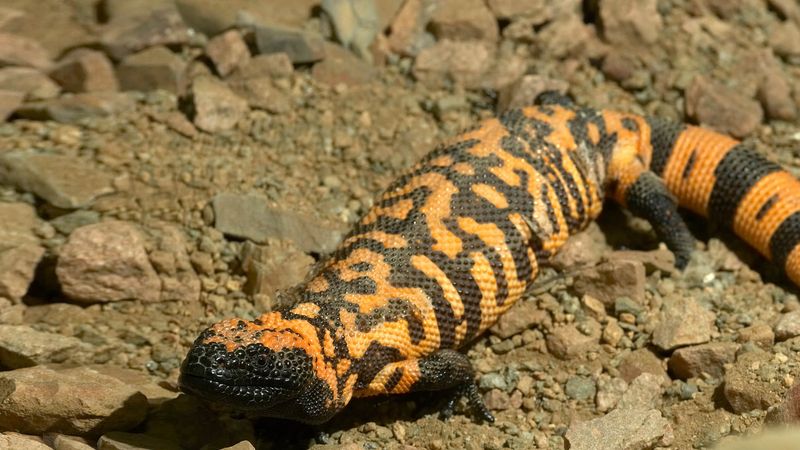
The Gila monster is a rare sight in California’s southeastern deserts. Their orange and black beaded skin makes them unmistakable – and serves as a warning to potential predators.
Unlike venomous snakes that deliver quick strikes, Gila monsters bite and hold on, chewing venom into the wound. Their bite causes extreme pain, swelling, weakness, and dropping blood pressure.
Though rarely fatal to healthy adults, their bites require immediate medical attention.
These reclusive reptiles spend up to 95% of their lives underground, emerging mainly during spring breeding season.
18. California Kingsnake
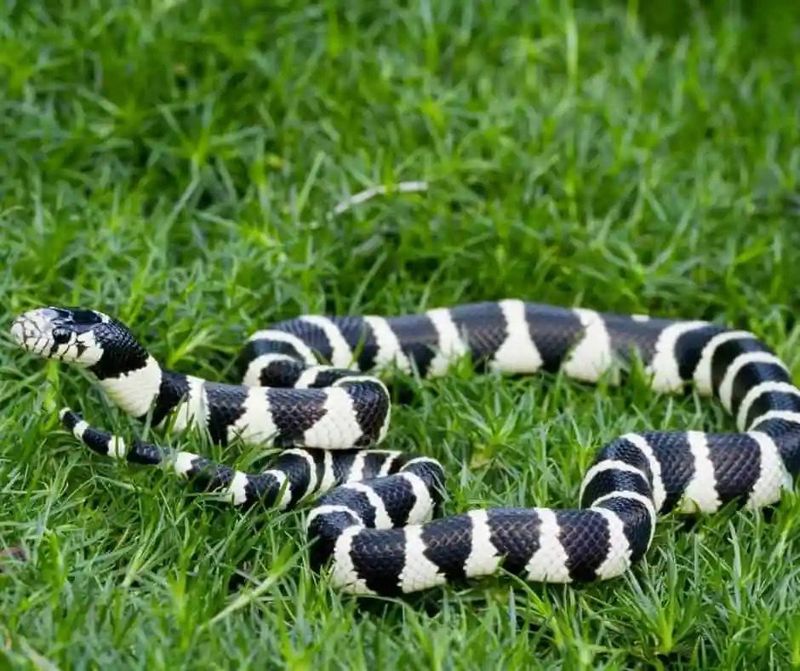
The California kingsnake is actually beneficial – it preys on other snakes, including rattlesnakes!
However, their resemblance to venomous coral snakes leads to many unnecessary accidents.
While not venomous, kingsnakes are constrictors with a powerful bite and musculature designed to subdue prey. They’re known for their aggressive defense when cornered, which includes striking, biting, and releasing a foul-smelling musk.
19. Western Toad
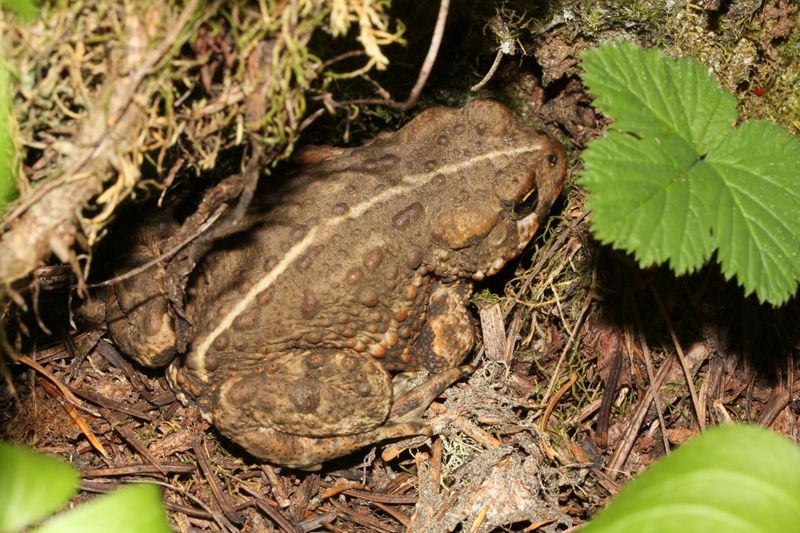
Western toads are common throughout California, from coastal regions to mountain meadows. Their olive-green or brown bodies with a distinctive white stripe down the back make them easily identifiable.
They’re most active during spring breeding season when they gather in large numbers near water sources.
My dog learned this lesson the hard way after mouthing one in our backyard – the resulting foaming and distress required an emergency vet visit!
While not aggressive, these toads should never be handled without gloves, and hands should be thoroughly washed afterward.
20. Scorpaena Guttata (Scorpionfish)

The real danger lies in their dorsal, anal, and pelvic fins, which contain venomous spines that can deliver extremely painful stings.
The venom causes intense pain, swelling, and in severe cases, respiratory distress. Many stings occur when fishermen try to remove them from hooks or nets, or when divers accidentally brush against them.
During a tide pooling expedition near La Jolla, a marine biologist showed us one perfectly disguised among the rocks. Had she not pointed it out, I would have never noticed this dangerous fish hiding in plain sight.
